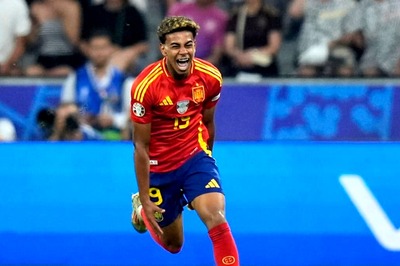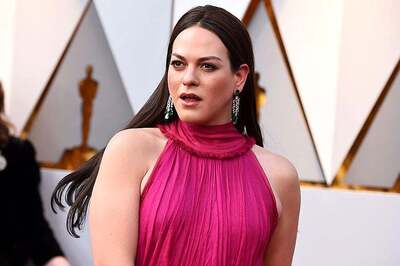
views
Varanasi: As the battle of 2019 enters its last leg, BJP and the SP-BSP gathbandhan slug it out for every seat except Varanasi, which seems to be a cakewalk for Prime Minister Narendra Modi. The third player, Congress, is, however, queering the pitch by having fielded upper caste candidates to disrupt caste arithmetic of both BJP and alliance.
In BJP’s hopes of a second run to government formation in Delhi, phase seven much like the previous phase, and holds equal importance. All 13 seats going to polls on May 19 were won by the BJP in 2014. Similarly, 13 out 14 seats of east UP, polling for which was held on May 12, were also won by the BJP in the last general elections. This time around, however, the saffron party faces a major challenge from the SP-BSP-RLD alliance in the state.
Apart from Varanasi, the prestige seat of Gorakhpur from where UP chief minister Yogi Adityanath had been several term MP, Chandauli the parliamentary constituency presently represented by BJP state president Mahendra Nath Pandey and Gajipur presently held by Union Cabinet Minister Manoj Sinha will also go to polls in the final phase.
Other seats in this phase are Maharajganj, Kushinagar, Deoria, Ghosi, Salempur, Ballia, Mirzapur and reserved constituencies of Bansgaon and Robertsganj. In Mirzapur it’s another Union Minister and president of NDA constituent Apna Dal, Anupriya Patel, who is in the electoral fray.
Analysis of the previous results and present political realities on the ground suggest that this time around the road ahead is not easy for the BJP. Last time, BJP had painted the entire region saffron, riding on strong Modi wave, often referred to as “Modi Tsunami”. This time, the BJP is banking more on caste mobilisation and developmental work taken up by the state and the Union governments.
The challenge has been further mounted by the alliance of SP-BSP. Faced with a strong caste alliance that is duly supported by the minorities as well. The BJP is now pinning hope on its core upper caste vote bank along with sizable inroads into the large sections of the non-Yadav OBCs and the non-Jatav Dalit castes in the region. It’s the area where many numerically small most backward castes (MBCs) and several non-Jatav Dalit castes, collectively make a strong voting bloc.
Both in 2014 general elections and 2017 state elections, a large section of these smaller OBCs and Dalit castes had moved towards the BJP. For example, the Nishads and the Rajbhars. The question is will they still be inclined towards the BJP or they see greater possibilities in the gathbandhan.
So while for the BJP, Varanasi remains a walk over-like situation, the only challenge being to ensure that victory margin of the prime minister doesn’t come down as compared to 2014.
In 2014, Modi had got 56.37% votes. His nearest rival Arvind Kejriwal of the Aam Aadmi Party polled just 20.30% votes, while Ajay Rai of the Congress managed just around 7.34% votes. This time around, the absence of any major political stalwart against the prime minister has almost sealed the fate here. Congress is once again pinning hopes on former MLA Ajay Rai, while the SP has fielded Shalini Yadav — daughter-in-law of former Rajya Sabha deputy chairperson Shyam Lal Yadav.
Equations however change as one drives further away from Varanasi. For example, in Gorakhpur where the opposition had sprung a surprise in 2018 bypolls by conquering the old saffron citadel. The gathbandhan then had stitched an alliance with a small caste identity-based Nishad party and fielded Praveen Nishad as its candidate. The caste dynamics tilted the scale in its favour and BJP had lost the seat by 20,000 votes.
This time though BJP enacted a coup against the alliance by breaking off the Nishad party and entering an alliance with the outfit itself. However, now it is “BJP plus Nishad party” versus a Nishad candidate from the alliance in Gorakhpur. While SP has fielded former MLA Ram Bhual Nishad, BJP is banking upon Bhojpuri star Ravi Kishan Shukla from here. The question is will the Nishads here, go by the party or with a candidate from their community.
Also, the Congress has given a ticket to a Brahmin from Gorakhpur, turning the poll battle into a closely watched one. It will be interesting to see if the grand old party's Madhusudan Tripathi be able to make some dent in BJP’s core upper caste Brahmin votebank.
Political observers, therefore, feel Gorakhpur is not an easy seat for the BJP. Similarly, in Gazipur, Union minister Manoj Sinha is in a tough contest. Compared to his 31.11% votes in 2014, SP-BSP together had polled more than 52% votes. This time it’s Afzal Ansari, the old-time politician, a former MP and brother of don-turned-politician Mukhtar Ansari, who is an alliance candidate from here. In 2014, Afzal had contested independently from Ballia constituency and had polled third. With around 42 % OBC, 29% MBC and seven percent Muslim voters here, Sinha’s hopes rest solely on Modi factor.
In Chandauli as well, with 28% OBC, 21 % MBC, 24% SC and eight percent Muslim voters, BJP state president Mahendra Nath Pandey is in a tight contest. In 2014, he had got 42.23% votes while SP-BSP together had 47% votes. With no strong Modi wave this time around, the challenge had only mounted as Akhilesh and Mayawati had tried hard for a larger consolidation of the backwards and Dalits.
Similarly in Ghosi and Ballia too, BJP finds itself in a mega challenge. Both in Ghosi and Ballia, the gathbandhan along with the party once floated by Ansari brothers —the QED (Qaumi Ekta Dal) — were outsmarted by the BJP in 2014. QED was later merged with BSP before the 2017 assembly polls. In Ghosi, the combined vote share of the three was above 54% as compared to BJP’s 36.52%. In Ballia, it was above 56% to BJP’s 38.18%.
In Ballia, BJP has fielded a Thakur, Virendra Mast, a sitting MP who has now been shifted to the town. The alliance has surprisingly fielded a Brahmin, Sanatan Pandey. In this area, 38% of the voters are from upper caste, while 26% are OBC and another 10% are from MBC and 12% are Dalits.
In terms of vote share of 2014, BJP seems better placed in Deoria, Maharajganj and Bansgaon constituencies. In Deoria, it was BJP’s 51% against alliance’s 38.29% in 2014. In 2019, BJP has fielded Rampati Ram Tripathi, the former party state president from here, BSP has fielded Vinod Jaiswal and Congress has fielded Niyaz Hasan. The BJP here is also hoping for Congress candidate to make some dent in alliance's Muslim votebank. The constituency has around 11% Muslim voters.
Maharajganj and Bansgaon, close to Gorakhpur, had been BJP strongholds. In recent history, Maharajganj was lost by BJP only in 2009. In Bansgaon, BJP is once again banking on its two-term MP Kamlesh Paswan. BJP polled around 48% votes here in 2014 as compared to SP-BSP’s combined vote % of 41. These two seats will also be a test for UP CM Yogi Adityanath’s political hold.
The Congress in this phase is pinning its maximum hope on Kushinagar seat. Here, its senior leader and former Union minister RPN Singh is in the electoral race. Singh had won this seat in 2009, but lost to BJP in 2014. In 2014, BJP got around 39% votes, while the Congress leader polled second with around 30% votes. BSP and SP together had polled around 25% votes.
So in Kushinagar, this time around it’s a clear triangular fight. While Congress will hope of non-BJP votes through Singh, BJP will hope for the division of anti-votes.
In Mirzapur again, it seems to a triangular fight between Apna Dal, alliance and the Congress. Facing Union minister Anupriya Patel is Congress’s Lalitiesh Tripathi And SP's Ramchandra Nishad. In 2014, while Anupriya got 43.32% votes, Lalitesh got 15% and the alliance got around 33% of votes. So the Congress factor remains a complex scenario both for the BJP and alliance here.
In Robertsganj as well, the BJP and alliance’s fate depends upon the Congress factor. In 2014, Congress had got around 10% vote. BJP got 42.69%, while SP-BSP combined vote was around 37%. This time, it’s BJP ally Apna Dal that is contesting the seat. Pakuri Lal of Apna Dal is contesting against Bhailal Kol of SP and Bhagwati Prasad of the Congress. A lot will depend upon whose vote bank does Congress dent into.
This reserved constituency has around 17% upper caste Hindu voters, 18% OBC, 27% MBC, and 23 % Dalit voters. Around six percent voters are Muslims.
Naturally, the last phase remains a challenge for the BJP. Keeping an eye on the large population on non-Yadav and the non-Jatav OBC and Dalits respectively, both Prime Minister Modi and Akhilesh-Mayawati have vigorously played the caste cards.
During the campaigning, debates ranged from allegations of Modi being a fake OBC to the PM claiming of having been born in a most backward caste. While the prime minister tried to unite several castes by playing on the poverty card. In one of his rallies in the region, he said, “I have lived through poverty. I know what it is. It’s the poor people whose blessing has led me to serve the nation”.
BSP chief Mayawati tried to counter it by going personal in her attack against Modi, even dragging his wife in the political slugfest. Besides this, both Akhilesh and Mayawati had also tried to send strong signals about the strength of the alliance and its longevity. Akhilesh even hinted at Mayawati being the alliance's PM face, all with the intent to woo the crucial non-Yadav and the non-Jatav OBC and Dalit voters respectively.



















Comments
0 comment